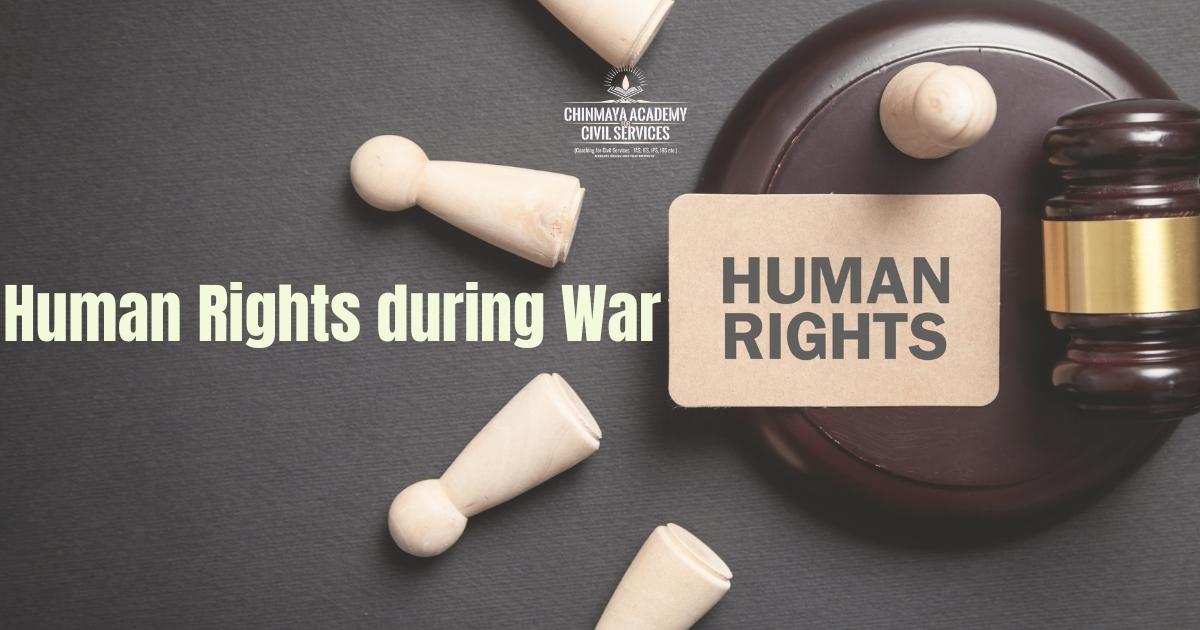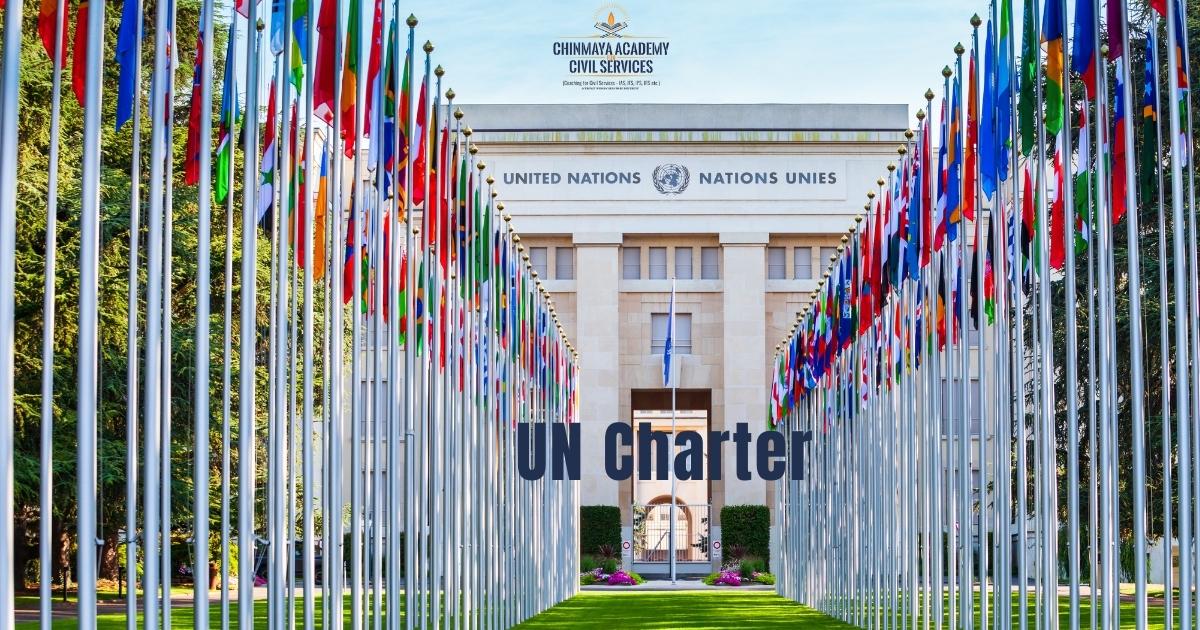
Human Rights during the war
Most of the gravest human rights violations are committed during war including the use of rape and starvation as a weapon of war, recruiting children to serve on the frontlines, launching direct attacks on civilians, etc. Some of the most serious crimes under international law are committed during armed conflicts. These include:
War crimes
It includes serious violations such as willful killings, direct attacks on civilians, torture, use of prohibited weapons, the murder or ill-treatment of prisoners of war and crimes of sexual violence.
Crimes against humanity
These are crimes committed as part of a widespread or systematic attack by or on behalf of a state or an organization against a civilian population during peace or wartime. There are 11 crimes against humanity including murder, extermination, enslavement, deportation or forcible transfer of a population, torture, rape and other serious forms of sexual violence, enforced disappearance and apartheid.
Genocide
These include acts committed with the intent to destroy, completely or partially, a national, ethnic, racial or religious group. These may also be committed in peacetime.
Jus ad bellum & Jus in bello
Under international law, there are two distinct ways of looking at war—the reasons you fight and how you fight. Thus, there exists two independent branches of law to govern each namely,
Jus ad bellum
- It defines the legitimate reasons a state may engage in war
- Also defines criteria that render a war ‘just’
- It is primarily derived from Charter of the United Nations
Jus in bello
- Regulates how wars are fought through a set of laws
- It is not concerned with legality of a war
- It is understood through the International Humanitarian Laws
International humanitarian law (IHL)
While both International Human Rights Law and International Humanitarian Law guarantee rights during both times of peace and conflict, International Humanitarian Laws are more specifically developed as the law of international armed conflicts.
It is a set of rules that seek to limit the effects of armed conflict on people, including civilians, persons who are not or no longer participating in the conflict and combatants. It aims to protect individuals as a consequence of the rules of behavior for states. This is achieved through the protection of persons and restrictions on the means and the methods of warfare.
Source of IHL
International humanitarian law finds its sources in a series of treaties, conventions, protocols and customary international law. The following instruments form the core of modern international humanitarian law:
- The Hague Regulations respecting the Laws and Customs of War on Land
- The Geneva Convention (I) for the Amelioration of the Condition of the Wounded and Sick in Armed Forces in the Field
- The Geneva Convention
- II for the Amelioration of the Condition of Wounded, Sick and Shipwrecked Members of Armed Forces at Sea
- III for the Treatment of Prisoners of War
- IV for the Protection of Civilian Persons in Time of War
- The Protocol Additional to the Geneva Conventions
- Protocol I relating to the Protection of Victims of International Armed Conflicts
- Protocol II relating to the Protection of Victims of Non-International Armed Conflicts
Founding principles of IHL
- The distinction between civilians and combatants
- It expresses that only fighters may be directly targeted and thus protects civilians in armed conflict
- The prohibition of attacks against those hors de combat
- hors de combat includes those who are sick, wounded, and prisoners of war and thus no longer pose a threat
- the prohibition on the infliction of unnecessary suffering
- The principle of proportionality
- It demands that least amount of harm is caused to civilians, and when harm cannot be avoided, it needs to be proportional to the military advantage.
- Proportionality is only relevant when a military target is attacked and not upon attack against civilians
- the notion of necessity
- While military necessity acknowledges victory at battle as a legitimate consideration but does not provide the freedom to ignore humanitarian considerations.
- the principle of humanity
- It stipulates that all humans have the capacity and ability to show respect and care for all, even their enemies.
Enforcement of IHL
IHL sets out specific obligations on warring parties and third states with respect to IHL violations.
Warring parties
The primary responsibility to respect the rules of IHL lies with the warring parties to an armed conflict. A state is responsible for the behaviour of its soldiers when they take part in conflicts abroad. Thus, states are responsible to ensure that the rights in the Conventions are respected in all places under its control.
Third state
At all times, and especially during armed conflict, all states must take steps to ensure respect for the conventions of IHL. In practical terms, the international community could consider mitigation through political dialogue, demarches, restrictive measures such as sanctions, and ensuring accountability for war crimes.
Other actors
Other actor involved in monitoring respect for IHL include International Committee of the Red Cross (ICRC), international fact finding and enquiry missions, United Nations Special Procedures, treaty monitoring bodies, and media monitoring IHL violations.
UN Charter

The UN Charter is the constitutive instrument of the United Nations, signed on 26 June 1945. It sets out the rights and obligations of Member States and establishes the principal organs and procedures of the United Nations.
- The Charter consists of a preamble and 111 articles grouped into 19 chapters.
- Since the UN’s founding in 1945, the mission and work of the Organization have been guided by the purposes and principles contained in its founding Charter, which has been amended three times in 1963, 1965, and 1973.
The United Nations can take action on a wide variety of issues due to its unique international character and the powers vested in its Charter, which is considered an international treaty.
- As such, the UN Charter is an instrument of international law, and UN Member States are bound by it.
- The UN Charter codifies the major principles of international relations, from sovereign equality of States to the prohibition of the use of force in international relations.
The UN Charter establishes the fundamental rules of jus ad bellum, which is the law on the use of force. Jus ad bellum determines when one state may lawfully use force against another. It also seeks to limit the use of force between states.
Article 2 of the UN Charter states that all members must refrain from:
- Threatening or using force against the territorial integrity or political independence of another state
- Using force in any other manner
The only generally recognized legitimate use of force other than self-defense is that directed or authorized by the Security Council to restore or maintain international peace and security.
Other NEWS
| ATR panel assesses progress of tiger rewilding project | · Tasked by the Chief Wildlife Warden, a committee on Thursday visited the enclosure in the core area of the Anamalai Tiger Reserve (ATR)
· To assess the progress of the Forest Department’s first ever attempt at rewilding a tiger that was rescued as an abandoned cub in 2021. · Important bodies in NEWS o The National Tiger Conservation Authority o The Wildlife Institute of India · Important place o The Anamalai Tiger Reserve (ATR) |
| Internet ban in Manipur extended till October 31 | ·The Manipur government has extended the mobile Internet ban for another five days till October 31
The ban was extended following, apprehensions that some anti-social elements might use social media extensively for transmission of images, hate speech and videos inciting the passions of the public which might have serious repercussions on the law-and-order situation. |
| India’s green hydrogen move may worsen pollution if steps are not in place | · India’s plans to produce so-called ‘green hydrogen’ — where the gas is produced without resulting in fossil fuel emissions may end up worsening pollution if proper checks and balances are not in place |
Important places in NEWS
- The Anamalai Tiger Reserve (ATR)
- Kupwara district
The Anamalai Tiger Reserve (ATR)
Kupwara district (near the line of LoC)
 Chinmaya IAS Academy – Current Affairs Chinmaya IAS Academy – Current Affairs
Chinmaya IAS Academy – Current Affairs Chinmaya IAS Academy – Current Affairs
